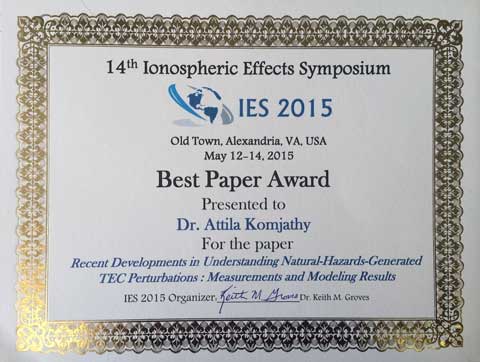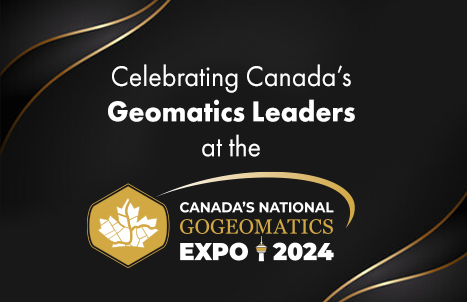GGE Adjunct Professor and Colleagues Win Best Paper Award at International Meeting
Dr. Attila Komjathy, a principal investigator at NASA’s Jet Propulsion Laboratory and adjunct professor in the Department of Geodesy and Geomatics Engineering at the University of New Brunswick, won the Best Paper Award at the 14th Ionospheric Effects Symposium in Alexandria, Virginia, last month.
Every few years, the IES brings together researchers studying the behaviour of the ionosphere with particular emphasis on the effects of space weather on military and commercial telecommunication and satellite systems including those used for satellite navigation.
Of the approximately 150 papers presented during the three-day meeting, the one by Dr. Komjathy and his team entitled “Recent Developments in Understanding Natural-Hazards-Generated TEC Perturbations: Measurements and Modeling Results” was judged to be the best in the non-student category and was awarded a certificate, a conference T-shirt with insignia, and a gift card.
Natural hazards such as earthquakes, tsunamis, and volcanic eruptions, generate acoustic-gravity waves – a special type of infrasonic sound wave – that travel all the way up to the upper atmosphere where they slightly perturb the distribution of the electrons making up the ionosphere. The signals from GPS satellites and the other global navigation satellite systems travel through the ionosphere on their way to the ground and are affected by these perturbations. By analyzing the signals received by a network of ground-based receivers, variations in the so-called total electron content or TEC can be measured including the tiny ones induced by natural hazards.
The work by Dr. Komjathy and his colleagues has the potential for great practical benefit as well as improving our understanding of how the ionosphere works. Detection of ionospheric perturbations in real time, for example, could improve tsunami early warning systems.







